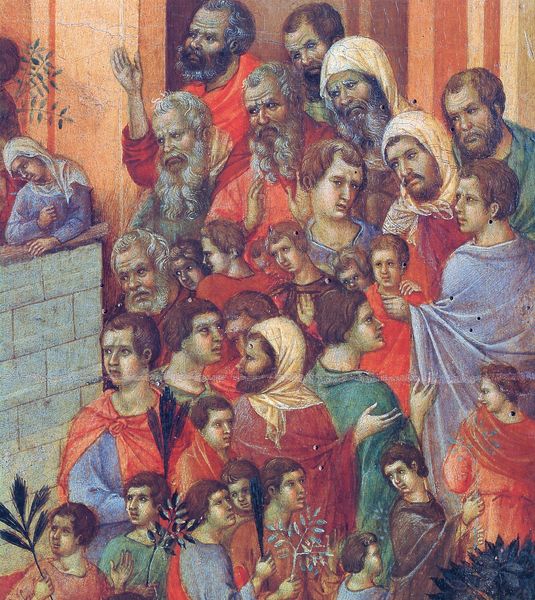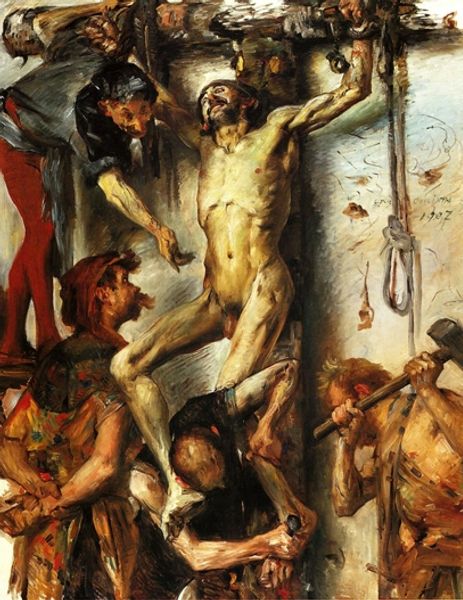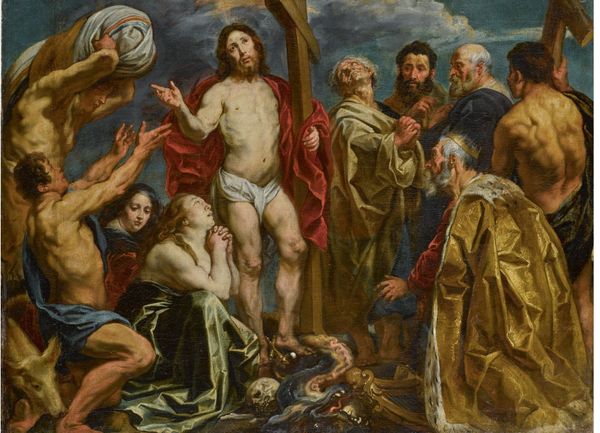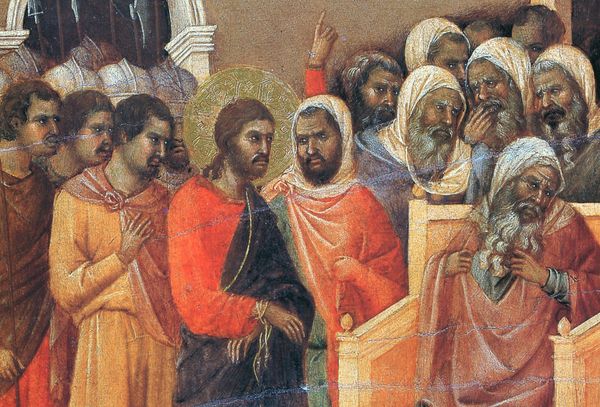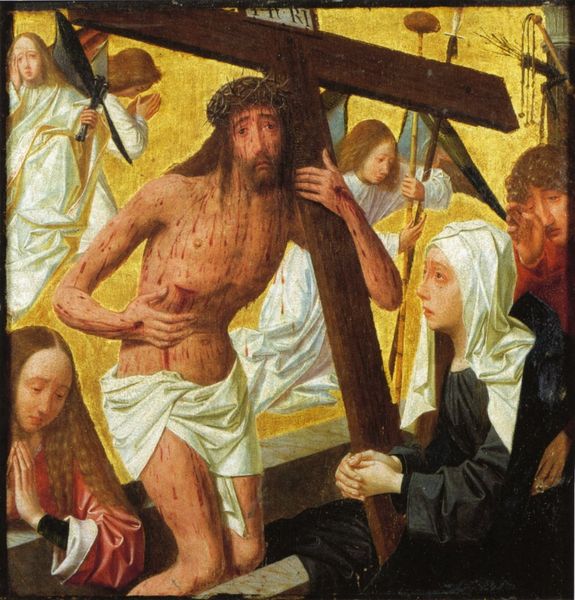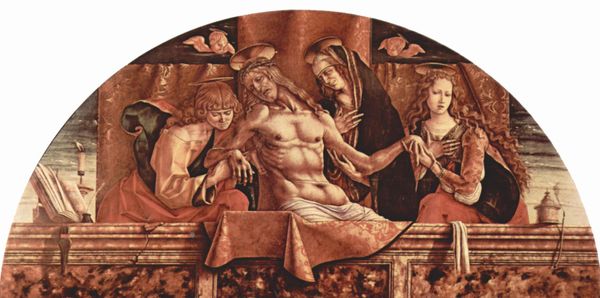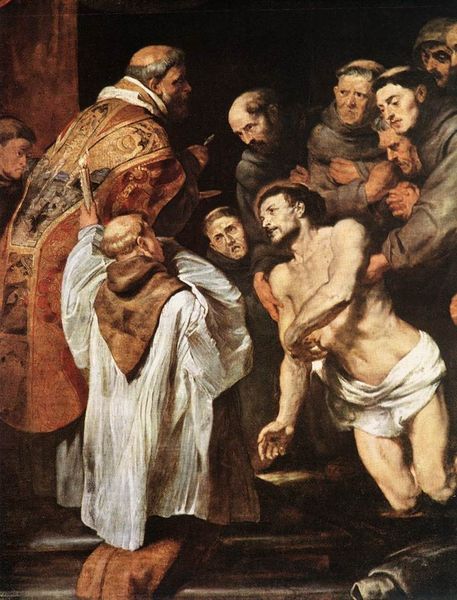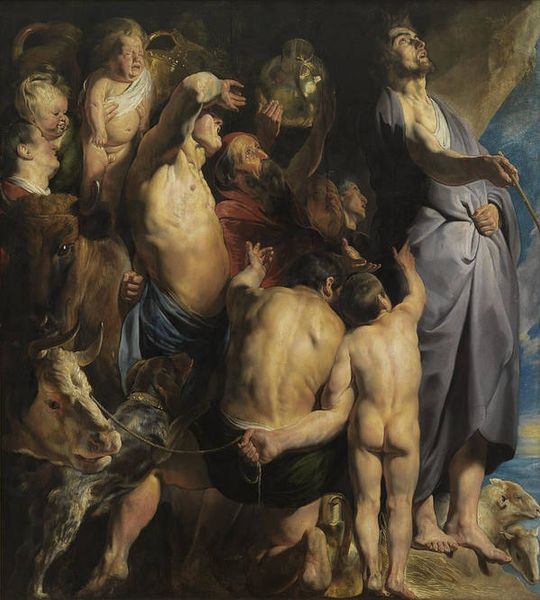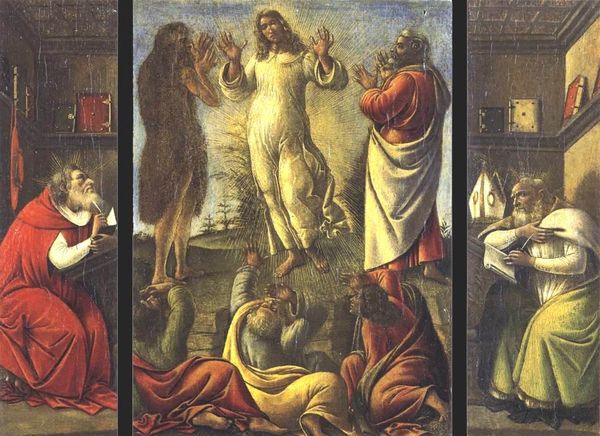
oil-paint, fresco
#
oil-paint
#
figuration
#
fresco
#
oil painting
#
history-painting
#
italian-renaissance
Copyright: Public domain
Curator: Immediately, I’m struck by the solemnity. The somber tones create a feeling of quiet anticipation, as if everyone depicted is holding their breath. Editor: Yes, it's a section of Bartolome Bermejo's “Christ Leading the Patriarchs to Paradise,” an oil painting dating back to around 1480, part of a larger altarpiece. The way Bermejo depicted sacred scenes, he introduced a whole school of thought regarding identity and how he views sacred ideas. How do you view such elements portrayed here? Curator: It feels staged almost. Christ has almost pushed forward to expose his body. In terms of the identity of sacred figures. The expressions on their faces – mostly hopeful, some pleading. Are we looking at some sort of analysis regarding penitence in the art and art history? How are the elements surrounding paradise informing that? Editor: That's astute. Bermejo certainly taps into the collective longing for redemption, doesn’t he? Paradise in terms of paradise as a physical space and also state of mind in the characters depicted here. We see some people pleading, which suggests paradise may also entail emotional state of peace, away from their own suffering and past. Notice, for instance, how Adam and Eve, with their clasped hands and downcast eyes, occupy a prominent space beside Christ, highlighting their role in humanity's fall and subsequent salvation. What symbolic weight would you give this? Curator: Symbolically, their proximity to Christ signals not only forgiveness but also a promise of renewed power. Eve’s gaze holds a sense of cautious hope; for women it’s especially critical as a narrative because so much history had Eve at its core. The question then shifts: Are they entering paradise equally? Is access really given to everyone? Is the Paradise narrative serving those in power and alienating women, or offering true universal opportunity? It’s ripe for intersectional feminist readings. Editor: I appreciate that viewpoint. Bermejo skillfully layers his work with such compelling elements. In line with symbolism, to look more closely, each figure possesses its halo, or emblem, or symbol of its status that grants a deeper perspective into Paradise and who belongs here, according to that thinking. Each person also leads the gaze towards a certain aspect, for me there's no central focal point. But the light behind these objects create what feel to me to be important moments to catch for the artist. Do you feel the artist meant to focus on the objects in paradise here too, instead of only figures? Curator: I hadn’t considered the interplay between figures and symbolic objects so acutely. It reframes the reading to be about an object's relation to those who can touch paradise through belief, maybe also action? Which brings into the play some questions of social and cultural weight that affect the art itself in the context of religion. Editor: Well, exploring these rich details certainly adds a more intimate and intriguing perspective on the art, particularly considering historical context as its meaning developed throughout history. Curator: Absolutely.
Comments
No comments
Be the first to comment and join the conversation on the ultimate creative platform.


